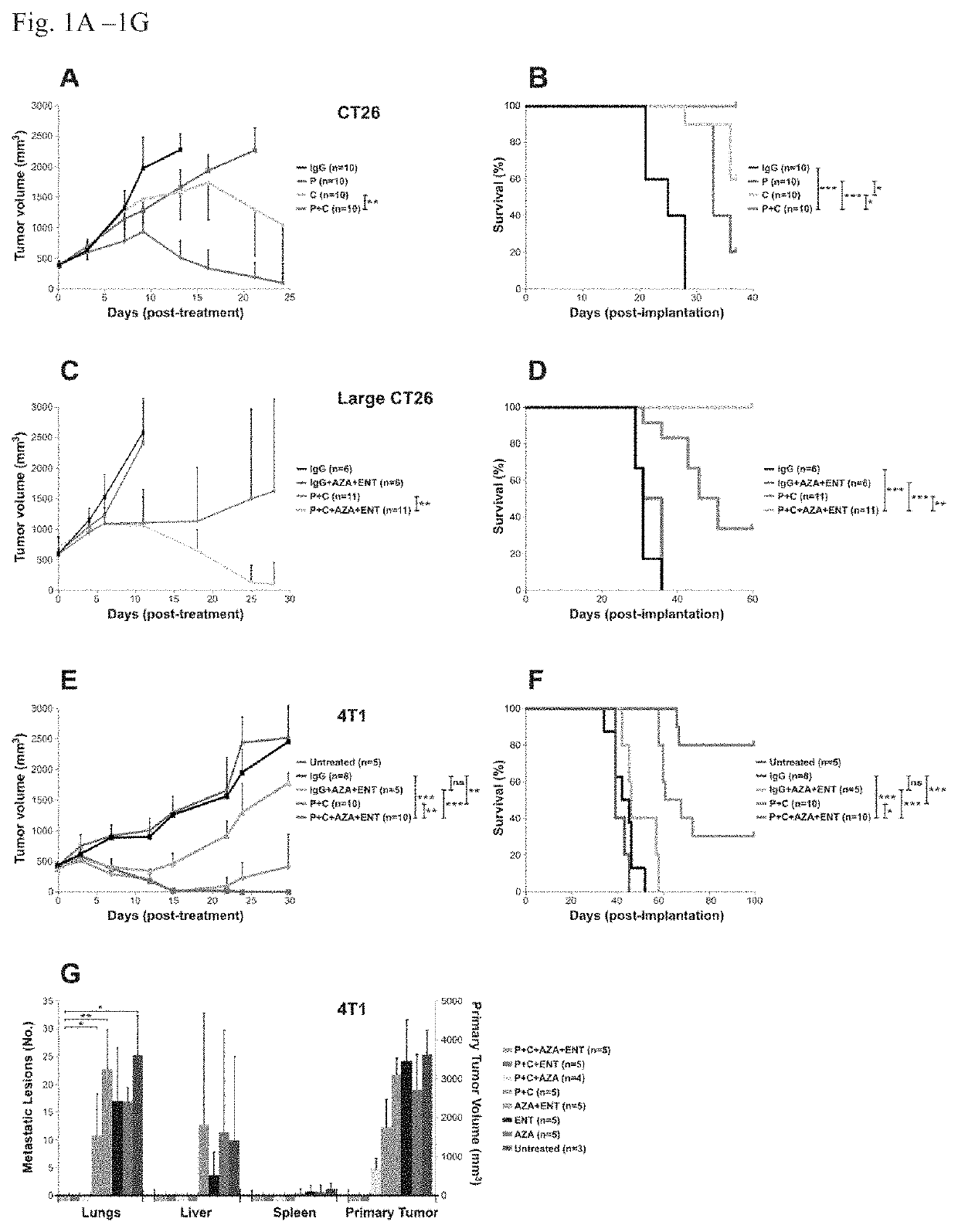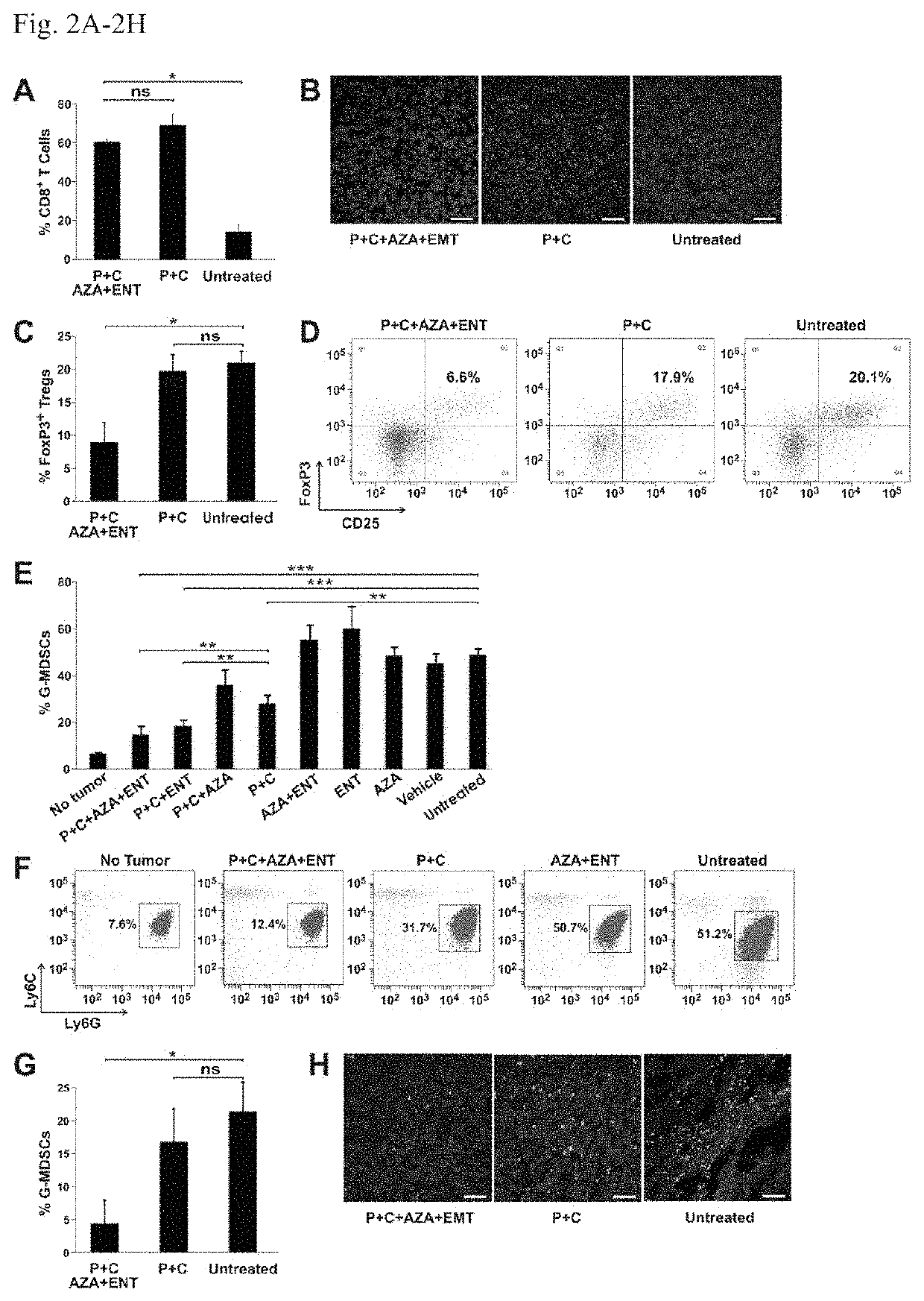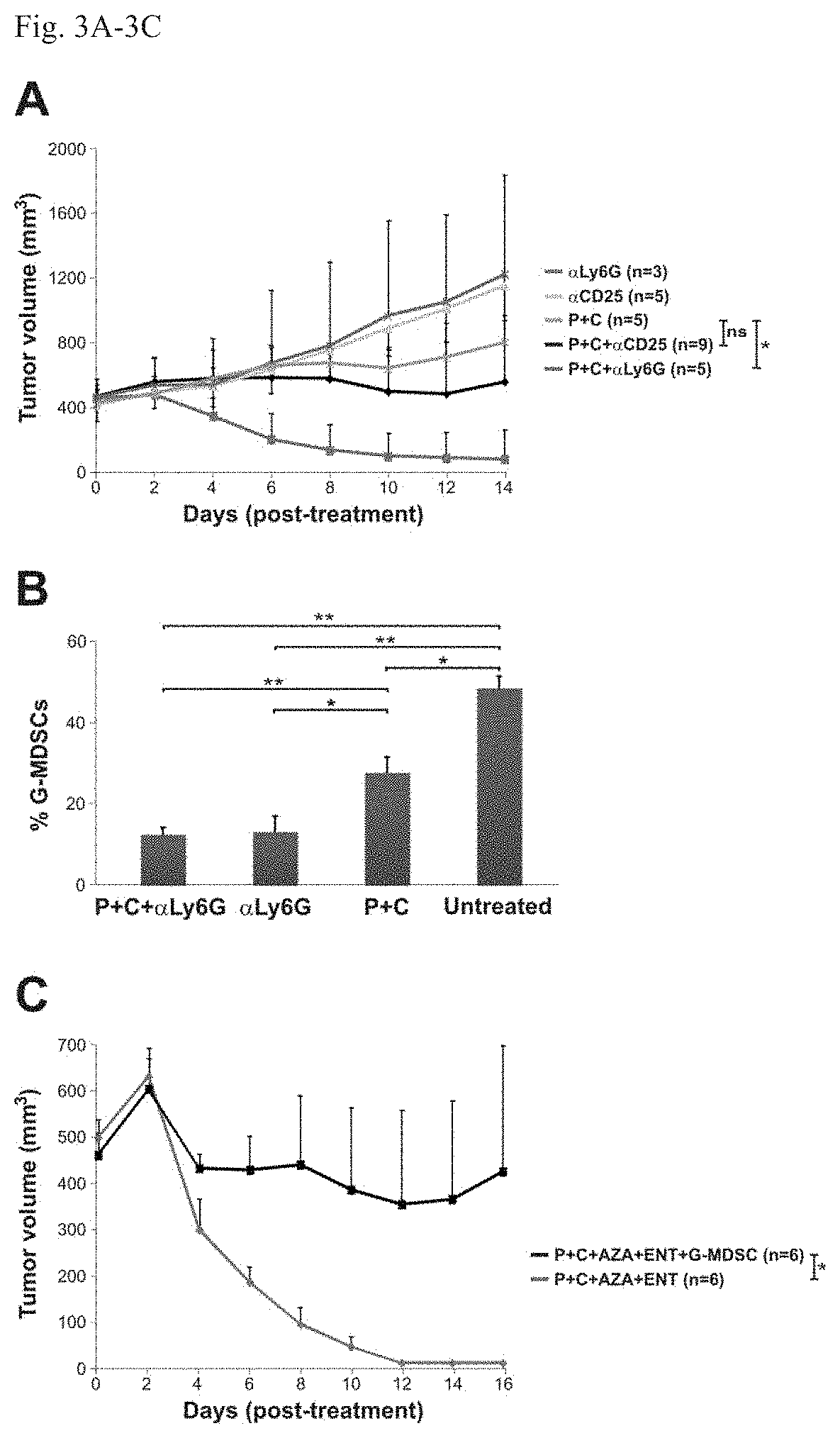Suppression of myeloid derived suppressor cells and immune checkpoint blockade
a technology of suppressor cells and myeloid derived cells, applied in the field of cancer treatment, can solve the problem of little genetic characterization of either
- Summary
- Abstract
- Description
- Claims
- Application Information
AI Technical Summary
Benefits of technology
Problems solved by technology
Method used
Image
Examples
example 1
Materials and Methods
[0033]Reagents.
[0034]HyClone RPMI 1640 with L-Glutamine and McCoy's 5A were purchased from Invitrogen Life Technologies. HyClone Fetal Bovine Serum (FBS) was purchased from Thermo Scientific. Collagenase from Clostridium histolyticum, Type IV was purchased from Sigma-Aldrich. The following antibodies and reagents were used for animal experiments: mCD152 (mCTLA-4) monoclonal antibody (9H10, BioXCell), mPD-1 monoclonal antibody (RMP1-14, BioXCell), mCD25 monoclonal antibody (PC61.5.3, BioXCell), mLy6G monoclonal antibody (RB6-8C5, BioXCell), Polyclonal Hampster IgG (BioXCell), entinostat (BPS Bioscience), 5-azacytidine (Invivogen).
[0035]Cell Lines.
[0036]4T1 (CRL-2539, murine breast tumor cells) and CT26 (CRL-2638, murine colorectal adenocarcinoma) were purchased from ATCC. Both tumor cell lines were grown in McCoy's 5A supplemented with 10% Fetal Bovine Serum at 37° C., 5% CO2.
[0037]Preparation of Illumina Genomic DNA Libraries.
[0038]Genomic DNA libraries were pre...
example 2
[0067]Genetic Analysis.
[0068]We first sequenced the exomes (24,306 genes) of both CT26 and 4T1 cells. Eight and 3.5 gigabases of generated sequence were mapped to the genome for CT26 and 4T1, respectively. 83.5% (CT26) and 72.3% (4T1) of bases in the targeted regions were covered by at least 10 unique reads in tumor DNA. Sequencing of the exomes revealed 683 and 47 somatic mutations in CT26 and 4T1, respectively (Dataset S1).
[0069]It has been shown that ˜10% of the mutant amino acids created by somatic mutations in human colorectal and breast cancers give rise to epitopes that are predicted to be recognized by the patient's MHC-I alleles (17). To determine whether this was true for the murine colorectal (CT26) and breast (4T1) tumors, we mapped the somatically mutated epitopes to BALB / c MHC-I using established algorithms. As such predictions are meaningful only if the mutant genes are expressed, we determined the transcriptomes of the two cell lines using RNA-Seq. Three hundred and ...
example 3
[0071]Effects of Immune Checkpoint Blockade.
[0072]We then tested the effects of immune checkpoint blocking antibodies on tumors derived from these cells in mice. BALB / c mice bearing subcutaneous CT26 tumors of moderate sizes (˜400 mm3) were used for the initial experiments. While repeated treatment with anti-CTLA-4 or anti-PD-1 antibodies as single agents retarded tumor growth, tumor eradication was not observed (FIGS. 1A and B). Combination therapy with both antibodies resulted in eradication of tumors in vast majority of the mice. Conversely, tumors larger than 600 mm3 did not respond to the combined anti-PD-1 / anti-CTLA4 treatment as well (FIG. 1C), with only 4 out of 11 animals showing long-term survival (FIG. 1D).
[0073]Next, BALB / c mice with well-established 4T1 tumors (˜400 min) were evaluated; these tumors spontaneously metastasize to the lungs and other organs. The 4T1 tumor model is highly recalcitrant to most therapeutic agents, including immunotherapy (16). The animals gen...
PUM
| Property | Measurement | Unit |
|---|---|---|
| body weight | aaaaa | aaaaa |
| volume | aaaaa | aaaaa |
| pH | aaaaa | aaaaa |
Abstract
Description
Claims
Application Information
 Login to View More
Login to View More - R&D
- Intellectual Property
- Life Sciences
- Materials
- Tech Scout
- Unparalleled Data Quality
- Higher Quality Content
- 60% Fewer Hallucinations
Browse by: Latest US Patents, China's latest patents, Technical Efficacy Thesaurus, Application Domain, Technology Topic, Popular Technical Reports.
© 2025 PatSnap. All rights reserved.Legal|Privacy policy|Modern Slavery Act Transparency Statement|Sitemap|About US| Contact US: help@patsnap.com



